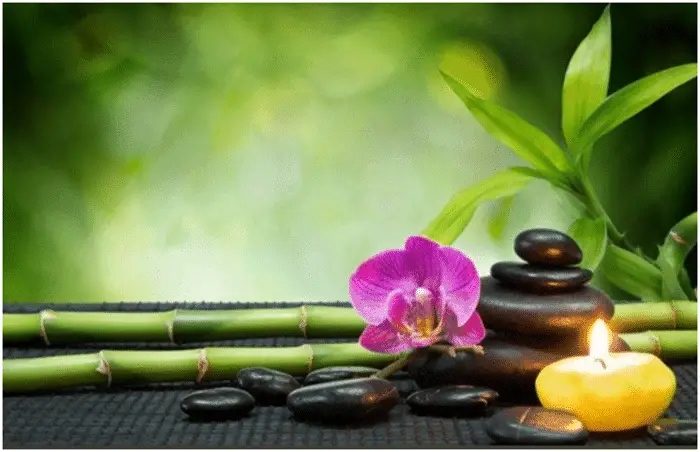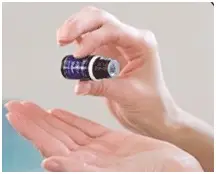Last Updated on November 11, 2022 by Brenda
For total wellness of our body, mind, and spirit, we passionate lovers of essential oils appreciate what goes into making them. We want to know how to use essential oils safely and effectively for wellness and with caution.
Essential oils are created from Mother Nature’s unadulterated plant kingdom. Those plants can be flowers, seeds, grasses, fruits, bushes, shrubs, trees, leaves, twigs, bark, and roots. The oils are removed from the plant source and are termed essential because they are fundamental for the plant’s life. The essence is the spirit, the core, the heart and soul of plants and you too. All plants have a fragrance, but we do not normally notice the odor of a Maple tree or Coneflower, yet inside its heart, it is there for capturing. These are the concentrated pure extracts that make 100% pure essential oils.

The oils are not adulterated, altered, or use pesticides for growing by reputable oil brands and are tested for no chemicals or additives.
You will sometimes see volatile and that simply means the oils evaporate quickly; it also means they can burn, so keep away from flames. Because of their volatile nature, they need to be kept in dark colored glass bottles and stored in dark places. Some of them, like the Citrus oils, lose their effectiveness over time so they need to be used within 3-months of opening the bottle. Others, like Patchouli and Cypress, actually get stronger the longer you have them. Most are colorless or a light yellow. Some oils contain the compound azulene that colors the oil blue, for example, Blue Tansy, German Chamomile, and Yarrow. Others, like Black Cumin and Wintergreen, can often turn red during the distillation process.
Essential oils are usually extracted by steam using a distillation process with nature’s plant kingdom. Other methods are used such as solvent extraction as well. These oils are used in cosmetics, soap, perfume, and other products. They are also used in food—Oil of Cloves is used to make watermelon rind pickles, desserts, and tooth ache medicine. Oil of Lavender is used in soaps and perfume. Other oils are used in drinks and food. Some oils add scents to household products used for cleaning. Now that we understand the meaning of essential oils used in aromatherapy, please read the articles that follow below.
What Aromatherapy Is

Sometimes called essential oil therapy, aromatherapy is the science and artful use of the natural essence from plants to complement, stabilize, and support health and wellness for a glowing body, having clarity of mind, and spiritual awareness. When these three aspects are fully functional, you will restore to health the all of who you are.
Essential Oil History

Cultures worldwide have used herbs, roots, leaves, berries, and flowers of plants in Egypt, India, and Asia for thousands of years all the way through history. Native Americans were wise to the uses and incorporated plants in their traditional Medicines. The ancients understood essential oils even better than we do in modern times, since everything we have done has been done before! Read more about Ancient Egyptian Medicine and the Ebers Papyrus. These articles are fascinating and also tell what various plants did for the people in ancient times still used today.
The oils have never really gone away—they are making a resurgence in today’s society because they are profitable and are an alternative medicine.
Essential oils are used in religious rituals, body support, and spiritual enrichment and are used aromatically, topically (on the skin), and internally with caution.
History of Aromatherapy Video (Part 1)
History of Aromatherapy Video (Part 2)

Using Essential Oils Aromatically

Our sense of smell is indeed a gift to behold. It will remind us of days gone by when we smell certain spices or an apple pie baking—maybe back to grandmother’s kitchen when we were small. Smell is a complicated process for the body.
Olfaction uses nerve reception sensors in the brain to form the sense of smell to detect food, hazards, and more. It joins together with other senses for our taste. Smell binds to olfactory receptors in the nose. The process will tell you the smell, the memory and emotions associated with it. Animals function differently.
What we smell is at the limbic system, a group of subcortical structures (such as the hypothalamus, the hippocampus, and the amygdala) of the brain that are concerned especially with emotion and motivation. Using essential oils aromatically will give us the same effect as that apple pie baking.
How Does Aromatherapy Works Video
Each oil has different psychological, emotional, and physical effects. The best method is to use a diffuser to mist the oils into the air around you.
Diffusers using water are the ultrasonic type and the ones using pure oils are the nebulizer type. Either diffuser you choose will provide aromatherapy to your home or office.
Other methods are using the oils blended for a calming body massage with carrier oils. You can also add the oils to household cleaners.
Using Essential Oils Topically

Using essential oils on your skin (topically) is a great way to apply them. They penetrate your skin and when absorbed, they stay at the area for a great benefit.
Apply to your neck, temples, forehead, back, chest, abdomen, arms, legs, feet, and soles of your feet; however, keep away from your eyes, inner ears, damaged skin, and mucous membranes. When you have a massage, the oils absorb faster increasing blood flow to the area. Carrier oils help to increase absorption if your skin is dry and to moisturize your skin slowing the oil’s evaporation.
Fractionated Coconut Oil is a fantastic carrier oil if you or your friends have sensitive skin. Use one drop of your essential oil to three drops of carrier oil to see how that works. Always start with small doses during the day and repeat every 4- to 6-hours if you want.

You can also add essential oils to bath water, have a glass of wine, and feel as though you’re at a spa. A cold compress can be made using a wash cloth and adding a few drops of essential oil. Lavender, Eucalyptus, Peppermint, and Rosemary are the best essential oils for headaches.
Lavender

Eucalyptus

Peppermint

Rosemary

Add a few drops of essential oil to your favorite body lotion or cream for a relaxing and soothing moment and apply to your skin.
Using Essential Oils Internally

You’re ingesting internally essential oils enjoying your rich spaghetti sauce with Basil, Oregano, Garlic, and Parsley on top; when you have a Cinnamon roll with your Vanilla Coffee. I use Cardamom seeds in my mint tea and ground Cardamom in my baked sweets. These too have been used for centuries for essential oil complexes.
Many health benefits are derived from nature’s plant kingdom—essential oils. We all use Vanilla as a condiment, and spices add aroma and flavor, while others give therapeutic health benefits. Vanilla Oleoresin will not mix completely in a carrier oil like a steam distilled essential oil would. To blend completely, add Vanilla Oleoresin to an alcohol such as vodka if you are trying to achieve a smooth mixture for a healthy massage.
Ingesting concentrated essential oils takes an in-depth understanding and precaution. We are not all the same age, height, and weight with many more differences. With that said, research more about ingesting where the oils enter our bloodstream through our intestines. Being fat soluble and not water soluble, they will also go to our brain and other organs. The liver metabolizes the oils. If you have liver disease, cirrhosis, or hepatitis, do not use essential oils internally and do not use some vitamin supplements and herbs without talking with your gastroenterologist first! The essential oils do not stay in your body forever; they are passed out in your urine.
When you do ingest essential oils, use the proper amount according to labels or other professionals who give experience guidance that you trust. You do not want to consume anything that could be toxic to your body.
A way to thin out the oils is to use them in your cooking to swap out for the herbs, leaves, or ground spices you use now. If you do home canning of fruits, pickles, and jams/jellies, use the essential oil to replace ground or whole cloves when called for. Start using a very small amount of the oil since they are very potent. Don’t use a drop—use a minute amount by dipping a toothpick into the oil to be safe.
You can add essential oils to milk, tea, coffee, smoothies, lemonade, and other drinks, but error on the small amount size of the oil. Put a small amount into your yogurt, pudding, or fruit sauces. Never ever put drops of oil on your tongue and swallow it!
How to Use Essential Oils Safely

You’ve heard the term, “less is more,” right? That especially applies to the very potent and powerful essential oil use. You must be careful and prudent because a little goes far! You can always add a little more, but you cannot remove the “too much” used. I remember adding too much salt to my chili and thought that I’d add another can of tomatoes but no, the salt was not diluted—it was still too salty!
Always read the labels and do research, especially if you are a newbie. Because of essential oils’ potency, do a test area first on your skin about the size of a quarter. If no irritation, you’re good to go over more of your body.
If you do have irritation, I have found that the V-6 Vegetable Oil Complex by Young Living™ is an excellent choice to put on the area and it can be used to blend for a massage.
Learn more about safety using essential oils from Robert Tisserand, the guru of all time! Browse his site for even more useful information at his Tisserand Institute.
Final Thoughts
I hope this article about how to use essential oils safely and effectively has given you enough helpful information on your adventuresome journey with 100% pure essential oils and carrier oils. Happy shopping for beautiful skin and health!
Related Articles:

